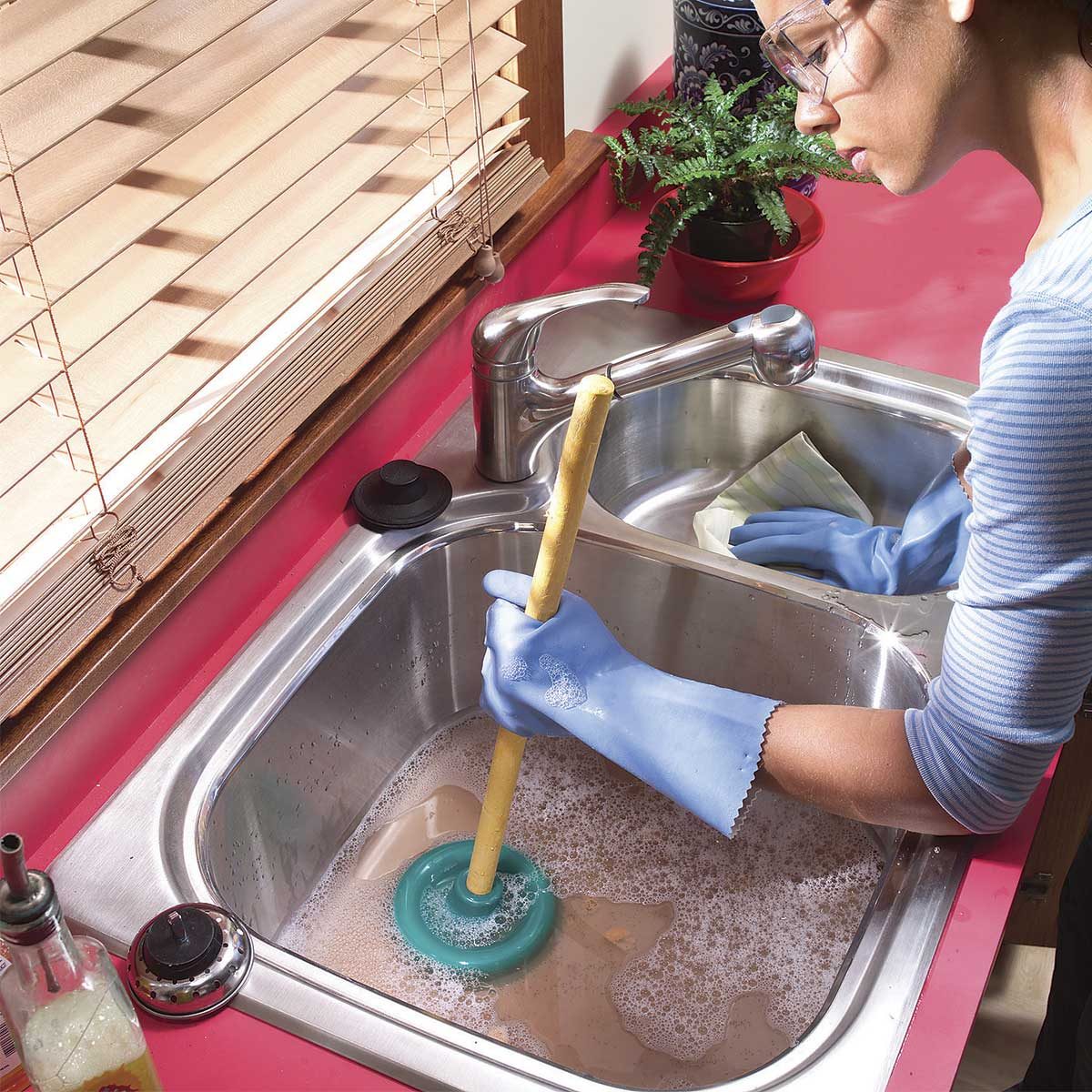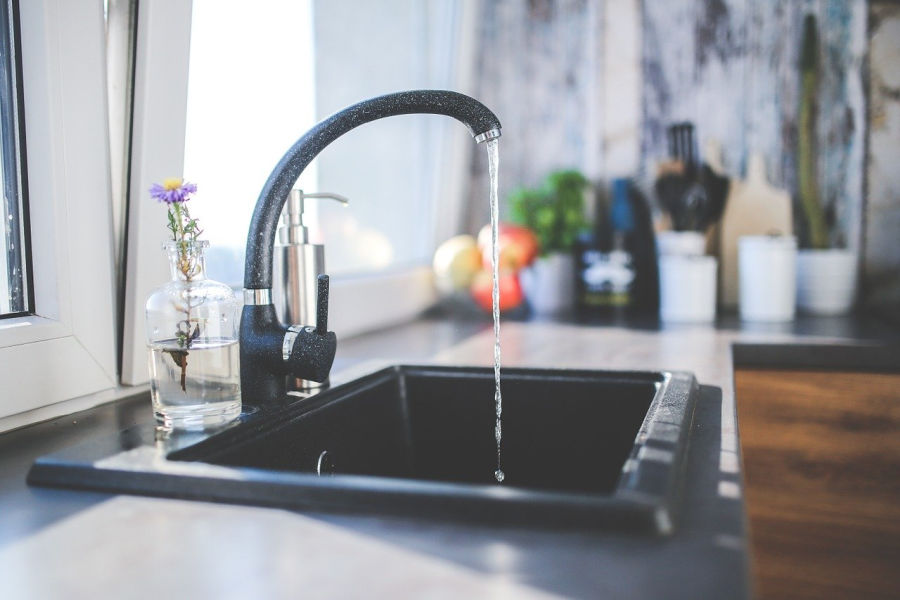Decoding Drain Delays - 6 Reasons Your Kitchen Sink Falters
Decoding Drain Delays - 6 Reasons Your Kitchen Sink Falters
Blog Article
We have discovered the article pertaining to Five Ways to Fix a Slow Sink Drain below on the internet and felt it made perfect sense to write about it with you on this page.

It's not typical for your cooking area sink to clog up multiple times in one month. If your sink obstructs two times a week, there's some trouble going on.
An obstructed cooking area drain doesn't just reduce your chores, it degrades your whole plumbing system, gradually. Here are some common routines that motivate sink clogs, and also just how to prevent them.
You need appropriate garbage disposal
Reusing waste is great, but do you focus on your natural waste also? Your kitchen should have two separate waste boxes; one for recyclable plastics as well as an additional for natural waste, which can end up being garden compost.
Having actually a marked trash bag will help you as well as your household prevent tossing pasta and also various other food residues down the drain. Generally, these remnants take in wetness as well as come to be obstructions.
The mistake isn't from your cooking area sink in all
Maybe the problem isn't from your kitchen sink, but the entire drainage system. In such a case, you may notice that other sinks and drains get clogged every other week. You need a professional plumbing service to repair this.
You're tossing coffee away
Made use of coffee premises as well as coffee beans still take in a considerable amount of wetness. They may seem tiny enough to throw down the drainpipe, yet as time takes place they start to swell as well as use up more space.
Your coffee grounds should enter into natural garbage disposal. Whatever portion leaves (possibly while you're washing up) will be cared for throughout your month-to-month clean-up.
You've been eating a lot of oily foods
Your kitchen area sink may still get blocked despite having natural waste disposal. This may be due to the fact that you have a diet regimen abundant in oily foods like cheeseburgers.
This grease coats the within pipelines, making them narrower as well as more clog-prone.
Make use of a bettor
Your pipe wasn't taken care of correctly to begin with
If you've been doing none of the above, but still obtain regular obstructions in your cooking area sink, you should certainly call a plumber. There may be a problem with just how your pipes were mounted.
While your plumber shows up, check for any kind of leaks or abnormalities around your kitchen pipelines. Don't try to repair the pipelines on your own. This may trigger an accident or a kitchen area flood.
A person tried to clean their hair in the kitchen sink
There's a correct time and location for everything. The cooking area sink is just not the ideal place to clean your hair. Cleaning your hair in the kitchen area sink will certainly make it block one way or another unless you use a drainpipe catcher.
While a drain catcher may capture the majority of the results, some strands might still get through. If you have thick hair, this may suffice to slow down your water drainage and ultimately create a clog.
There's even more dust than your pipes can manage
If you get fruits directly from a ranch, you may discover even more kitchen dirt than other individuals that shop from a shopping center. You can conveniently fix this by cleaning up the fruits and also veggies properly before bringing them right into your house.You need appropriate garbage disposal
My Kitchen Sink Won’t Drain - What Should I Do?
If Your Sink Has a Garbage Disposal...
Turn on the disposal. If the disposal hums and doesn’t turn, then there’s clog in the disposal unit.
Go to your circuit breaker panel, and switch off the circuit breaker to your garbage disposal.
Back in your kitchen, double-check that your garbage disposal is off by trying to turn it on. The disposal should not move, and it should not make any noise.
Lie down underneath your sink so that you can see and access the bottom of the disposal unit. Look for a hole that looks like the head of a hex-head bolt in the center of the unit.
Place an Allen wrench inside this hole and turn it from side to side until you feel a decrease in resistance and are able to rotate the wrench completely in a single direction. This action rotates your disposal’s blade manually.
Put the wrench aside, and press the disposal unit’s reset button or switch.
Flip your garbage disposal’s circuit breaker switch back on, and turn on the unit to see if the obstruction has cleared. If it hasn’t, repeat the steps above until the obstruction is removed.
How to Unclog a Kitchen Sink Drain
If you have a double bowl sink, seal one side of the sink with an airtight lid or a second plunger before plunging the other side. Otherwise, you won’t be able to create adequate suction.
Place the cup of the plunger completely over the drain opening.
Turn on the faucet, and let the water run until it completely covers the cup of the plunger.
Start plunging by pushing the plunger down and pulling up again in order to build up suction. Make sure that the edges of the plunger stay in contact with your sink, or else you’ll lose the suction.
If you have trouble forming a seal between your sink and plunger, add petroleum jelly to the mouth of your plunger, and try again.
Plunge about five or six times before removing the plunger to see if water starts to drain properly. In some cases, you’ll even be able to feel the clog become dislodged while you plunge because suddenly there will be much less resistance. Repeat the plunging process until the clog clears.
Once water is draining properly again, run hot water down the drain for 5 minutes to help clear away grease, grime, and debris from the clog. https://www.plumbingjoint.com/blog/2019/august/my-kitchen-sink-won-t-drain-what-should-i-do-/

My Kitchen Sink Won’t Drain - What Should I Do?
If Your Sink Has a Garbage Disposal...
How to Unclog a Kitchen Sink Drain
https://www.plumbingjoint.com/blog/2019/august/my-kitchen-sink-won-t-drain-what-should-i-do-/
I came across that review about Why Is My Sink Not Draining? while browsing the web. In case you liked our post kindly remember to share it. Thank-you for going through it.
Call Today
Report this page